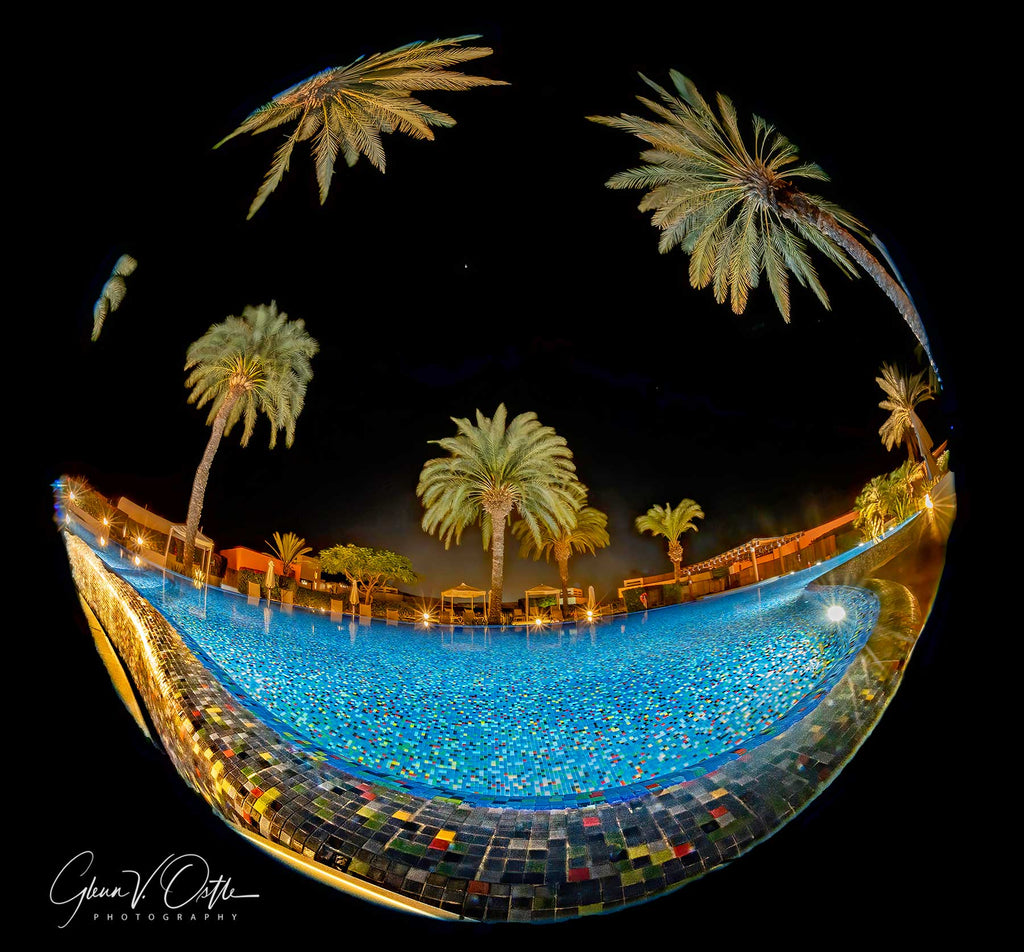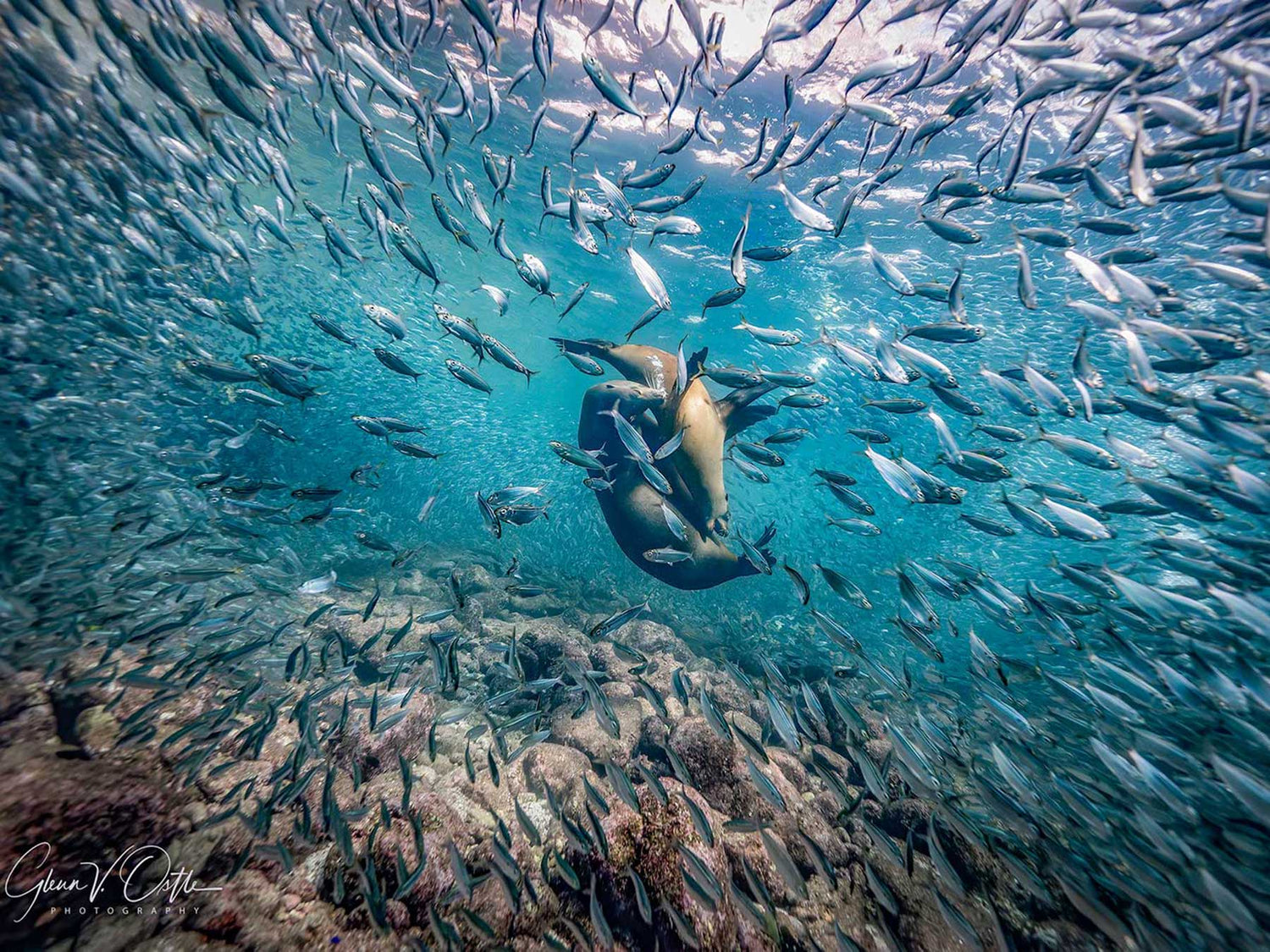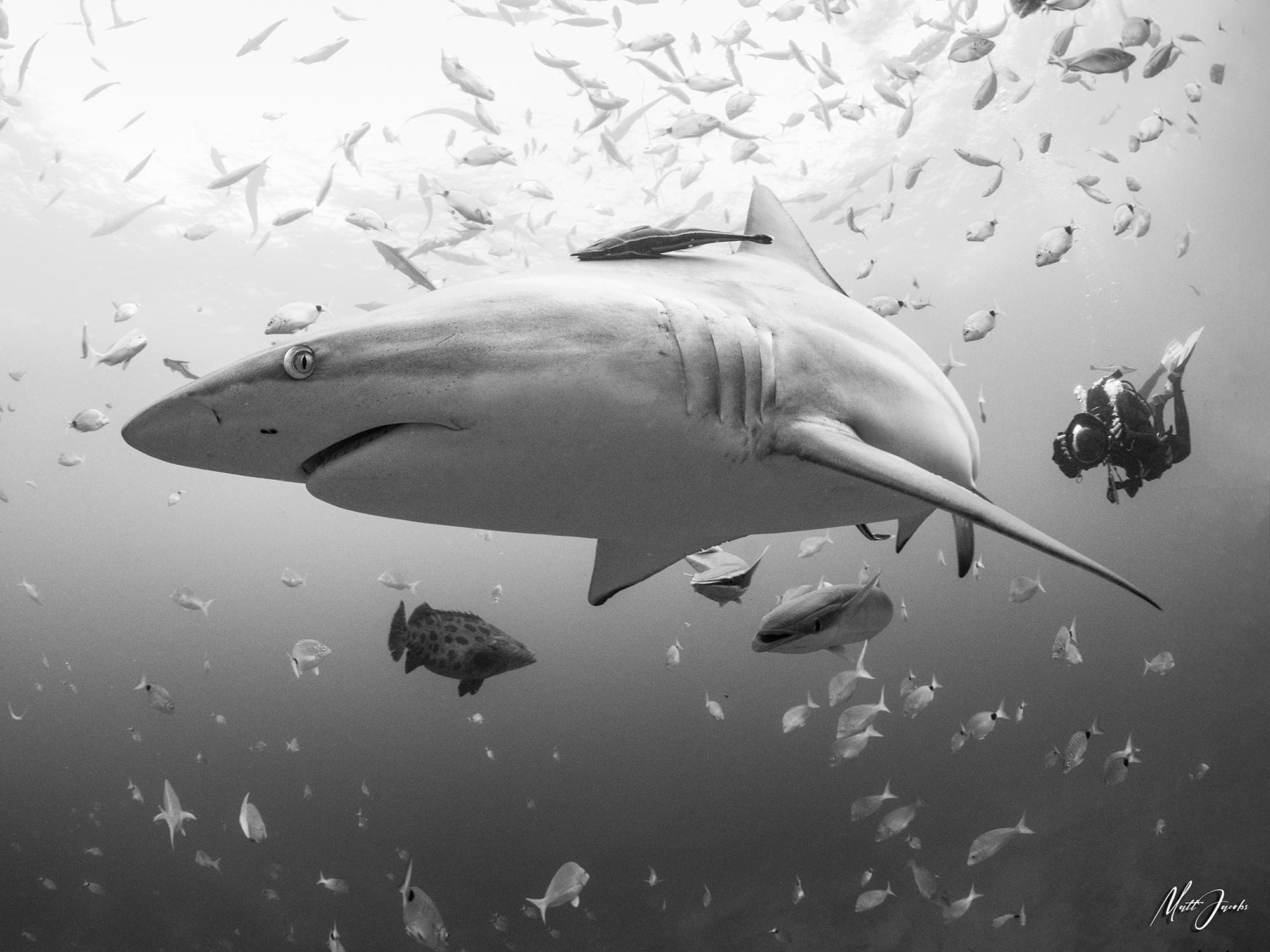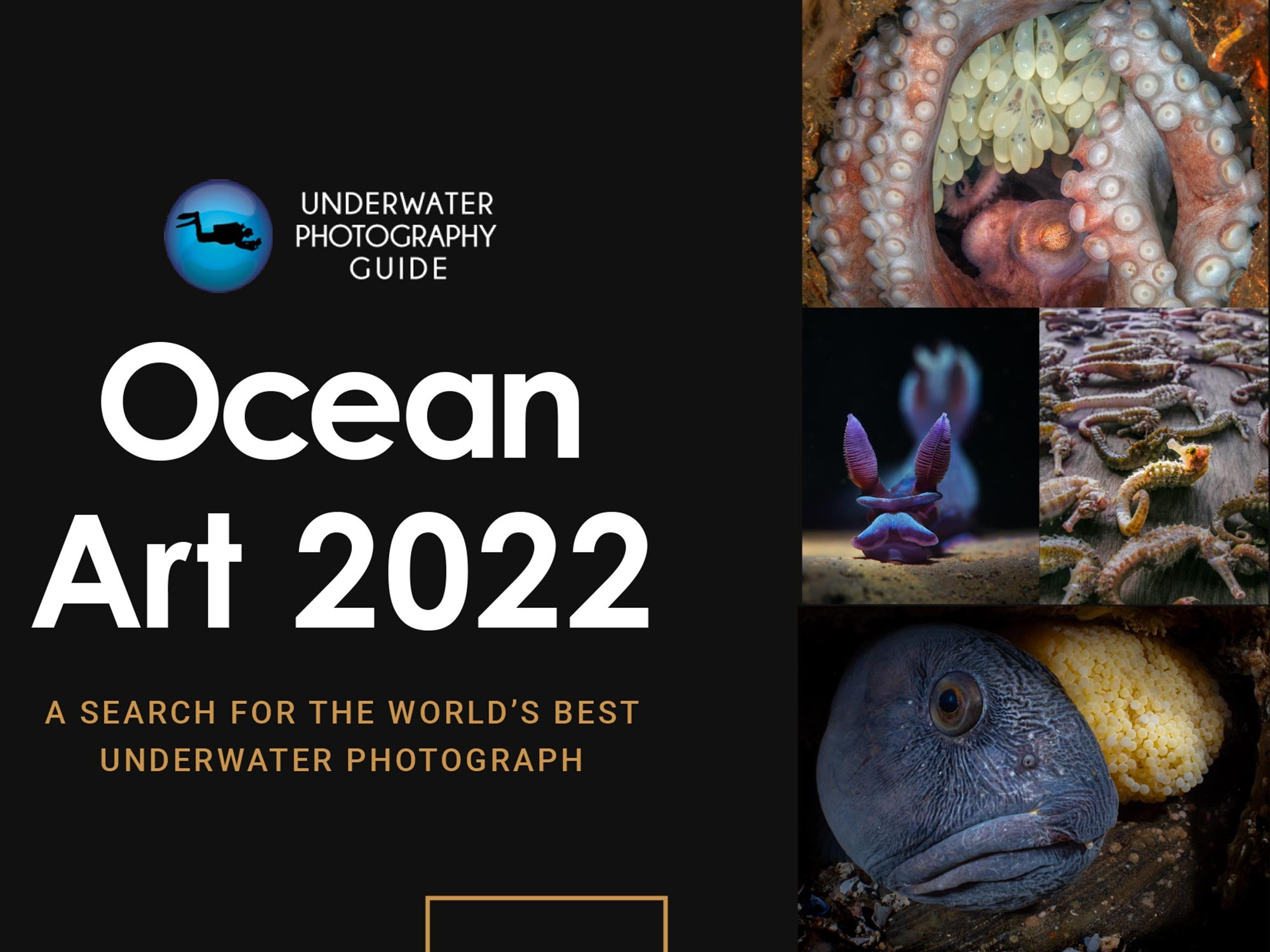By Glenn V. Ostle
The narrow Sea of Cortez is one of the world’s most biologically diverse bodies of water. Located between the Mexican mainland to the east and the mountainous Baja California Sur peninsula to the west, it is home to such a wide array of marine life that Jacques Cousteau called it the “aquarium of the world.”

A young sea lion seems framed against a large school of fish. There were several times during our dives that juvenile sea lions almost seemed to pose for pictures. In fact, we used this one for our 2022 digital Christmas card. My dual DS160 strobes helped bring out the detail in the darker parts of the sea lion. NIKKOR Z 14-30/4 S lens. f/6.7 • 1/250 • ISO 800 © Glenn Ostle
My partner Pam and I have been scuba diving in Mexico a number of times, but it had been a while, so we eagerly looked forward to reacquainting ourselves with its underwater wonders during a dive trip there in late 2022.
My photo gear included two Nikon Z6 cameras (one for use in my Ikelite 200DL underwater housing and a second as backup and for surface shots), and a pair of Ikelite DS160 strobes. Lenses included a NIKKOR Z 14-30/4 S and NIKKOR Z 24-70/4 S. For those cool full-frame circular shots I used a NIKKOR 8-15mm f/3.5-4.5 fisheye lens. As the focus of our trip would be mostly wide angle, I elected not to bring any macro lenses.

Sea lions can sleep up to twelve hours at a time and love to nuzzle and lie all over each other. This group was resting atop the rocks at the sea lion colony in Cabo Pulmo. As our boat passed by, I took this shot by holding up the housing which held my Nikon Z6 camera with the NIKKOR Z 14-30/4 S wide angle lens. f/11 • 1/250 • ISO 320 © Glenn Ostle
Cabo to La Paz
We began our trip in Cabo San Lucas and traveled north up the eastern coast of Mexico’s California Baja Sur, to Cabo Pulmo National Park. This special place was recently well described in an excellent article by Ikelite Ambassador David Valencia, which I strongly encourage you to read: Diving the Most Successful Marine Protected Area in Mexico.
Cabo Pulmo is a conservation success story. More than twenty years ago, overfishing, and irresponsible tourism threatened the livelihood of this rural town until the community teamed up with scientists and government officials to find ways to protect the local reef. As a result, marine life rebounded and in 1995 the area was declared a Natural Protected Area. And in 2005 it became a UNESCO World Heritage Site.

A school of big-eye jacks begins to swim in a circular fashion at Cabo Pulmo. Unfortunately, this never developed into a full-fledged tornado. The NIKKOR 8-15mm f/3.5-4.5 fisheye lens, at 15mm, provided a nice overview of the fish formation. f/11 • 1/500 • ISO 800 © Glenn Ostle
Two of the main draws here are large bull sharks and the huge schools of fish. Big-eye jacks especially can occasionally be seen to swim at high speeds in a circular pattern, often stretching between the sea floor and the water’s surface. This swirling column of fish is called a “tornado” and photographing it is on the bucket list of many of the underwater photographers who visit here. However, the area’s popularity has made this a little difficult as every day there are many boats vying to dive on just a few sites that are heavily regulated by the local authorities.

I really like this grouping of fish taken in Cabo Pulmo. The NIKKOR 8-15mm fisheye lens, set to 15mm, captured all the detail in the fish as they passed in front of large rock which provides a nice background element. I added a white vignette later in Photoshop which I thought gave the picture a dreamy feel. f/11 • 1/250 • ISO 1100 © Glenn Ostle
After boarding our boat from the beach each morning, our first stop was to allow the dive master to wade ashore in order to learn which sites we were allowed to dive. Limiting the number of boats on the different sites is understandable but proved disappointing. Despite four days of diving, we never got to visit a few of the more popular sites including El Islote and the shipwreck at El Vencedor. So, while we got some nice shots of large schools of fish, unfortunately we never witnessed the complete fish tornado.

We found this large turtle on the wreck of the Fang Ming. I liked the way it was composed. It was nice in color, but I think converting it to black and white brought more attention to the detail on the turtle as well as the growth on the ship that frames it. NIKKOR Z 14-30/4 S lens. f/6.7 • 1/180 • ISO 800 © Glenn Ostle
Next stop on our trip was La Paz further up the coast, where we met up with our dive group from Seasick Productions. During the week we dove with Fun Baja and visited sites including Suwannee Reef where we were overwhelmed by huge dense schools of fish. We also dived a couple of wrecks including the Salvatierra as well as the Fang Ming, a 180’ ship that apparently once belonged to Chinese smugglers.

The conditions were a little murky when we dove on the wreck of the Fang Ming, so I spent time shooting more wide-angle close-ups due to the large amount of particulate in the water, much of which I cleaned up in post processing. This little guy was quite colorful. NIKKOR Z 14-30/4 S lens. f/6.7 • 1/90 • ISO 400 © Glenn Ostle
One site we especially looked forward to revisiting was Los Islotes, a pair of rocky islets in Espiritu Santo National Park. Only a short daytrip from La Paz, this is home to the largest reproductive colony of California Sea Lions (Zalophus californianus) in the Sea of Cortez. With a population of between four and five hundred animals, it is a popular site for both diving and snorkeling.

Some of the rocks and walls at Los Islotes, are covered with colorful cup coral. NIKKOR Z 24-70/4 S lens. f/8 • 1/180 • ISO 400 © Glenn Ostle
On our way to Los Islotes, the Sea of Cortez lived up to its reputation for stunning sea life. A pod of bottlenose dolphins escorted our boat part way, leaping and twisting in our wake. A misty spray in the distance turned out to be a juvenile humpback whale that breached close to our boat several times. We even witnessed a number of mobula rays jumping out of the water and flapping their stubby wings.
As we approached Los Islotes, the peaks of the islets appeared striped with white guano, compliments of the many pelicans and frigate birds that continuously circle overhead. These islets are also home to brown- and blue-footed boobies, and while diving we even witnessed the surreal sight of cormorant birds zipping past us, chasing fish underwater.

A sea lion appears suspended between a large school of fish and the rocks that make up Los Islotes. NIKKOR Z 14-30/4 S wide angle lens. f/8 • 1/180 • ISO 400 © Glenn Ostle
On the rocks, sea lions barked and squabbled with one another, and large, melon-headed bulls postured for females and patrolled the underwater area, warning snorkelers and divers not to get too close.
Pam and I last visited this site more than twenty years ago, and at that time ours was the only boat here. This time more than twenty other boats floated just offshore, each busy unloading dozens of snorkelers and divers that quickly began kicking excitedly toward the islets.

Juvenile sea lions are incredibly playful with one another. As they frolic among huge schools of fish, they seem to be oblivious to all the people watching them. For this shot I again used my NIKKOR Z 14-30/4 S wide angle lens. f/5.6 • 1/250 • ISO 400 © Glenn Ostle
Becoming Part of the Fun
Close to the rocks, the water is quite shallow with depths from ten to fifty feet. Diving is the best way to avoid the floating crowds of lifejacket-wrapped snorkelers, but in shallow areas this often put us within range of the snorkelers’ kicking feet.
Sharing the water with aggressive sea lions can be a little unnerving at first, but it doesn’t take long to realize that many of the animals want to play with you as much as you want to interact with them. The juvenile sea lions, with their puppy-like faces, have lots of personality and will zoom around, chew on divers’ fins, and in short, make lovable pests of themselves.

A sea lion pup casts a curious glance toward the camera. I think this picture has a lot of depth with the rocks in the front and blue water in the background, all accented by the sun rays shining down. NIKKOR Z 14-30/4 S wide angle lens. f/6.7 • 1/180 • ISO 400 © Glenn Ostle
Photographing sea lions takes a lot of patience. Not only are they agile and fast, but they also swim up and down in the water column which changes the light from bright while shooting up, to darker when shooting down. I used a fast shutter speed to freeze the action and took advantage of auto ISO which helped maintain an acceptable exposure for most shots.
It is hypnotic to watch the sea lions dart into huge aggregations of silver fish, only to burst back through the schools, splitting, and dividing them. But the school quickly regroups into a wall of fish so dense that sometimes it is difficult to see another diver just a few feet away.
The water seems to boil with life, and simply watching this underwater ballet is mesmerizing.

This young sea lion seems to be considering which fish to choose for his dinner. My dual DS160 strobes helped highlight the darker parts of the sea lion. NIKKOR Z 14-30/4 S lens. f/6.7 • 1/180 • ISO 800 © Glenn Ostle
Keeping Them Safe
The California sea lions in and around La Paz, are a great attraction for locals and visitors alike and have been protected under Mexican law since 1994. But they are threatened by illegal fishing activities that can leave behind “ghost” fishing gear in which the animals can become entangled and sustain serious injuries or die. Patrol boats regularly keep watch around the islets.

It almost seemed that the sea lions enjoyed disrupting the flow of the huge schools of fish, causing them to scatter, swirl and then regroup. NIKKOR Z 14-30/4 S lens. f/6.7 • 1/250 • ISO 400 © Glenn Ostle
Sea lions are present at Los Islotes throughout the year, but a good time to visit is between October and March as this is the best season to also see whales in the Sea of Cortez. Wetsuits are recommended as the water temperature can sometimes be quite cool with average temperatures of around mid- to high- seventies Fahrenheit. Another caution is that we were told that the huge schools of fish that we saw are not always here. Which means that sometimes there will only be the playful sea lions to greet visitors.
After a few weeks of sampling the diving along the California Baja Sur, from sharks to sea lions, to huge schools of fish, we returned home reminded that Mexico has a lot to offer.

Using the NIKKOR 8-15mm f/3.5-4.5 fisheye lens on land as well as underwater, can be a lot of fun. This photo of the pool at our hotel, was taken at night by placing the camera on a solid surface for a long exposure. A little touch-up in Photoshop was needed, but I quite like the end effect as this picture always makes me smile. f/22 • 200 seconds • ISO 800 © Glenn Ostle
 Glenn Ostle is a freelance writer, photographer and Ikelite Ambassador living in Charlotte, North Carolina. He has been writing and taking underwater photos around the world for almost thirty years, along with his partner and dive buddy, Pam Hadfield. To see more of his work, go to: featherandfins.smugmug.com or follow him on Instagram @ostleglenn
Glenn Ostle is a freelance writer, photographer and Ikelite Ambassador living in Charlotte, North Carolina. He has been writing and taking underwater photos around the world for almost thirty years, along with his partner and dive buddy, Pam Hadfield. To see more of his work, go to: featherandfins.smugmug.com or follow him on Instagram @ostleglenn
Additional Reading
DSLR To Mirrorless | How Making the Switch Improved My Photography
The Brutal Impact of Fisheries on Sea Lions in Mexico
Diving the Most Successful Marine Protected Area in Mexico
Cousteau's Aquarium | Sea of Cortez with the Nikon Z6
Sharp Shooting: Developing Underwater Photography Skills on Safari
Gray Whales, Blue Water | Photographing Humpback Whales in Moorea













